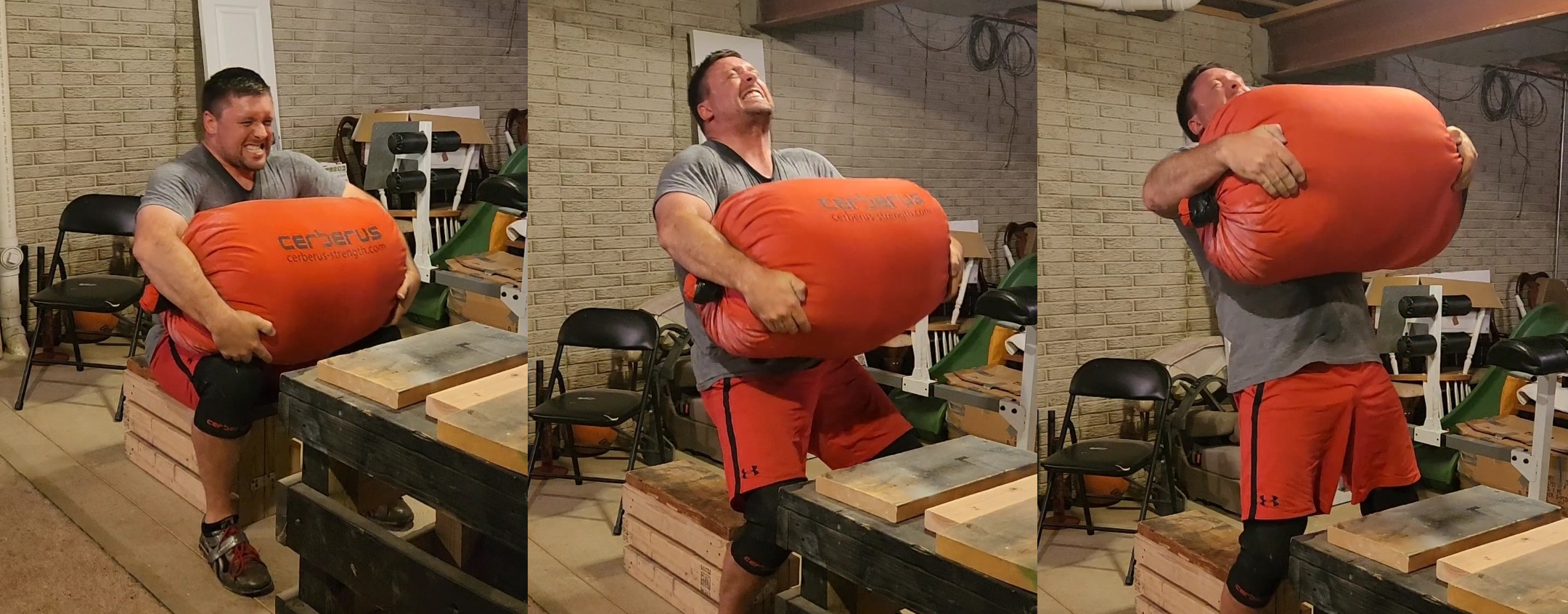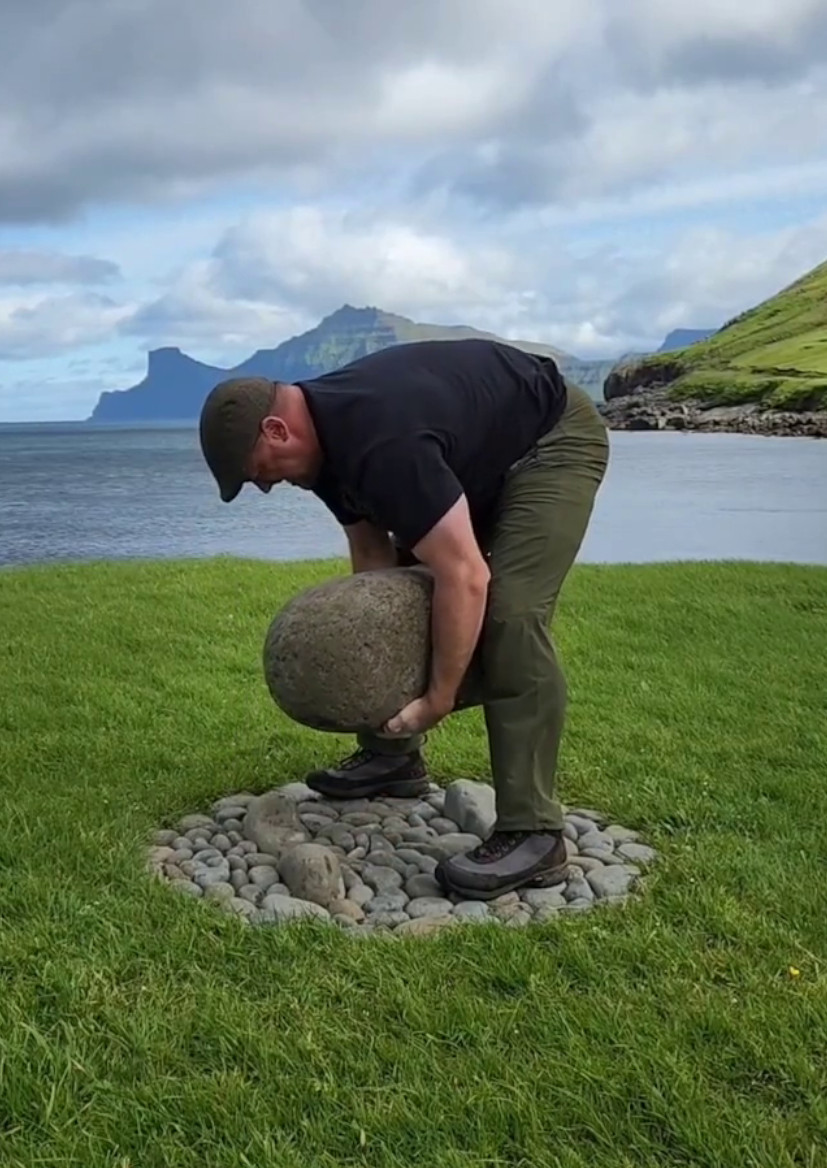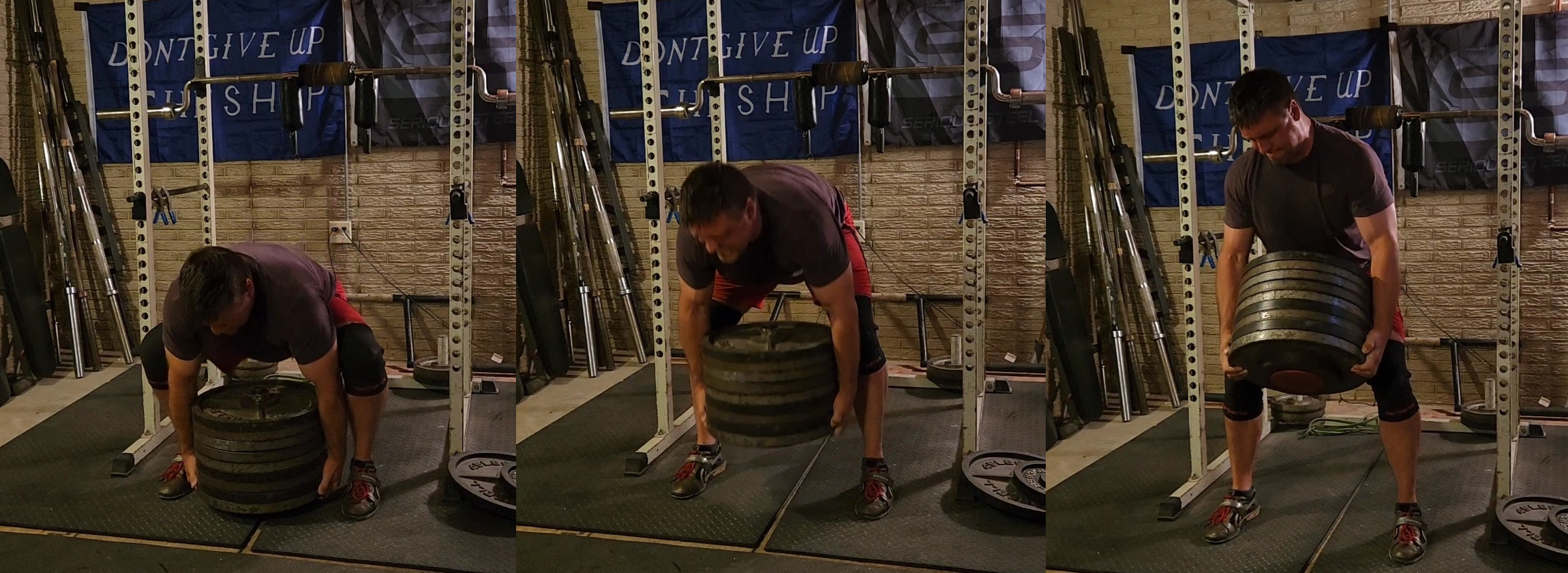Stonelifting training: The workout
Guest article by Sean Urquhart
In part 1, I went over how I structure my training — how I use 4 week training blocks, how I structure workouts, and how I manage fatigue. Now, in part 2, I’ll go into some more detail about warm-ups, exercise selection, and incorporating stonelifts.
Don’t forget that I’ve created a template for you to download and tweak as you like.

Warming up
Every workout starts with one or two exercises that I feel addresses a particular muscle group that is lagging or will benefit stone lifting.
On lower body days, I complete 3-5 sets of glute ham raises and/or ultra-heavy kettlebell swings before I begin any type of lifting. On upper body days it will be upper back work like shrugs, face-pulls, or band pull-aparts. Do not hesitate to bring the intensity with these accessory exercises before your main lifts. This intensity serves a few purposes:
- It will bring up lagging muscle groups.
- It will serve as a warm-up for your main lifts.
- It will build your work capacity.
- It will prevent you from skipping your accessory exercises at the end of your workout because you’re short on time or too tired.
I was guilty of the last one. I would go hard on 2-3 exercises and skip on the accessories for years. It wasn’t until I placed the accessory exercises at the very beginning of my training that I started to notice real gains in size and strength.
Choosing supplemental and accessory exercises
I choose supplemental and accessory exercises based on my current needs for a particular stone lift or barbell movement that I want to test.
For example, when building for a heavy HAV stone lift in my prep for the Faroe Islands, I felt that a strong mid/upper back was vital for supporting the stones in the bent over position.

For this I would do my goodmornings with a higher bar placement than normal, strict barbell and dumbbell rows, and plenty of squats on both speed and heavy days with the safety squat bar.
It’s important to look at your goals and your current weaknesses to plan accordingly.
Sets and reps
Although I will plan percentages, sets, and reps; I will often go by feel. I think that it is very important to listen to your body. Push when you can and take a step back when your body says.
For example, on speed days when things are feeling slower than normal, I will decrease the percentage and try to beat a certain number of sets in a given time. That allows me to push myself without having to grind myself down with heavier loads. The template lists the sets and reps that fit for each of the lifts, but here’s an outline:
- Warm-ups: 3-6 sets for 5-20 reps
- Main lift (max effort): work up to a 1-3 rep max
- Main lift (dynamic effort): 6-10 sets, 2-3 reps
- Supplemental lifts: 3-6 sets for 5-8 reps
- Accessory lifts: 2-5 sets for 10-20 reps
- Horizontal lats: 3-6 sets for 5-10 reps
- Vertical lats: 2-4 sets for 5-10 reps
- Core: 2-4 sets for 8-12 reps
Trainer and researcher, Bryan Mann, wrote something that I feel is far too valuable not to share and has a big impact on how I structure my sets and reps. I found that I had shared similar thoughts to Bryan without realizing it. He found that a lifter’s daily 1 rep max can vary as much as 18% — positive and negative.
But what does this mean? It means that if you program to lift 80% of your 1 rep max in your main lift, the actual load that you are lifting could be as much as 98% or as little as 62% of your best ability on that day. It all depends on your nutrition, sleep, recovery, etc.
This explains why some days the weight seems insanely heavy or super light compared to how it normally feels. For this reason, I will program what I want to lift going into the workout, but I will listen to my body. There have been days when I wanted to hit a 1 rep max but felt sluggish during warm-ups. I quickly assessed my performance and chose to lift 80% for 5 sets of 3 reps with minimal rest between sets.
Again, find what works best for you. Some people want to be told exactly what to do on every single day, but I have found there is too much variance in daily performance to train exactly to plan every time you’re in the gym.
I want you to leave feeling refreshed from your training. Not so beat up that you need a stretcher to get out the gym.
Programming stone lifts
If I am not preparing for any type of stone tour, I will decrease my natural stone lifts to once per week. The second day is reserved for working stone lifting movements in the form of sandbag box squats, plate picks, or carries of some sort. You will see how this is set up in the plan. Stones or stone movements are always performed on lower body days.

When I am preparing for a stone tour, I will increase the number of total stone lifts in each workout while also increasing the frequency to three times per week. Kind of like a Heavy – Light – Medium split. Again, stones will be lifted on both lower body days, but the light day will take place as extra work (low number of lifts) on one of the upper body days. Heavy days are reserved for the 400 lbs stones, light days are with my 320 lbs stone, and the medium days are with my 345/370 lbs stones. My goal is to gradually build the volume of medium and heavy stone lifts to the point that my heavy stones become my medium stones as I get stronger.
On my first tour of Scotland, the heavy stones were 320 lbs and my medium was 280 lbs. Two years later when I went on my first tour of Iceland, my heavy stones were 370/400 lbs, medium were 320/345 lbs, and light was 280 lbs. On my second tour of Iceland a year later, my heavy stones were all over 400 lbs, medium stones were 370 lbs., and my light was 320 lbs.
Stones are always mixed into the workout, never separate, and usually performed as the 3rd or 4th exercise of the day. This allows me to be fully warmed up for the stones but also mimics fatigue that I would encounter when lifting dozens of stones on a stone tour.
I hope this information has been insightful and helps with your own training! Don’t forget to download the Stonelifing Template for all of the extra details that I couldn’t fit in these articles.
Author
Sean Urquhart is one of the top stonelifting researchers and lifters in the world. In 2022, Sean toured the Faroe Islands, lifting more than 30 immensely heavy stones in just a couple of weeks.

Contributions
With massive thanks to Sean for sharing his expertise! You can follow him on Instagram.
Read the liftingstones.org letters
Join thousands of other stonelifters who read the world's most popular stonelifting newsletter.